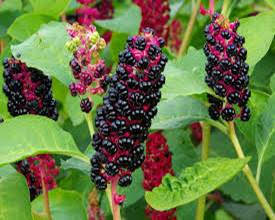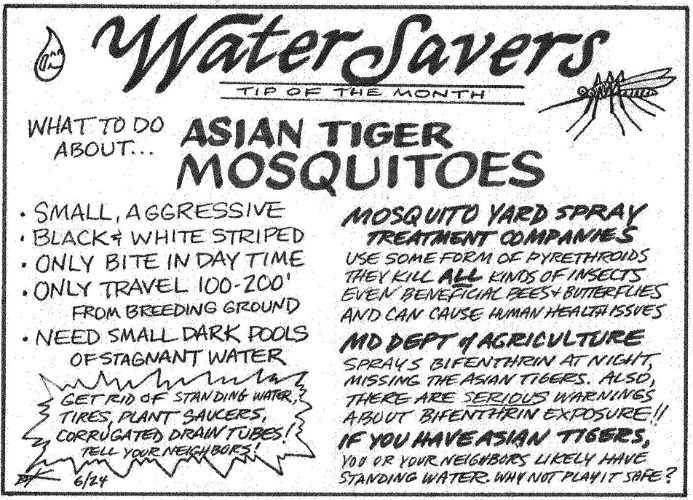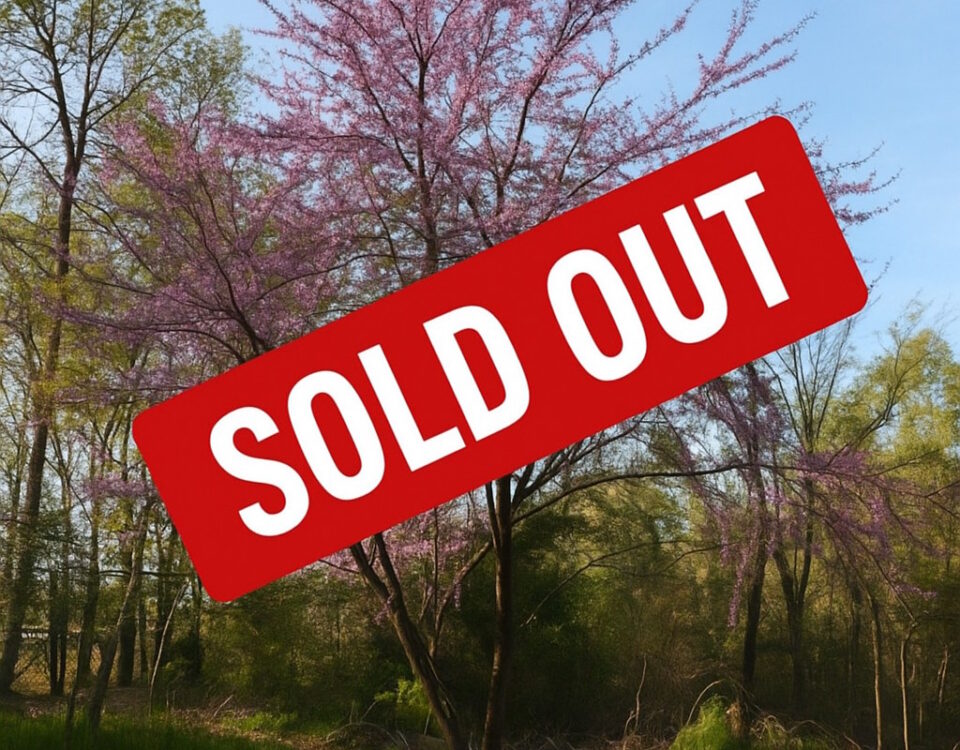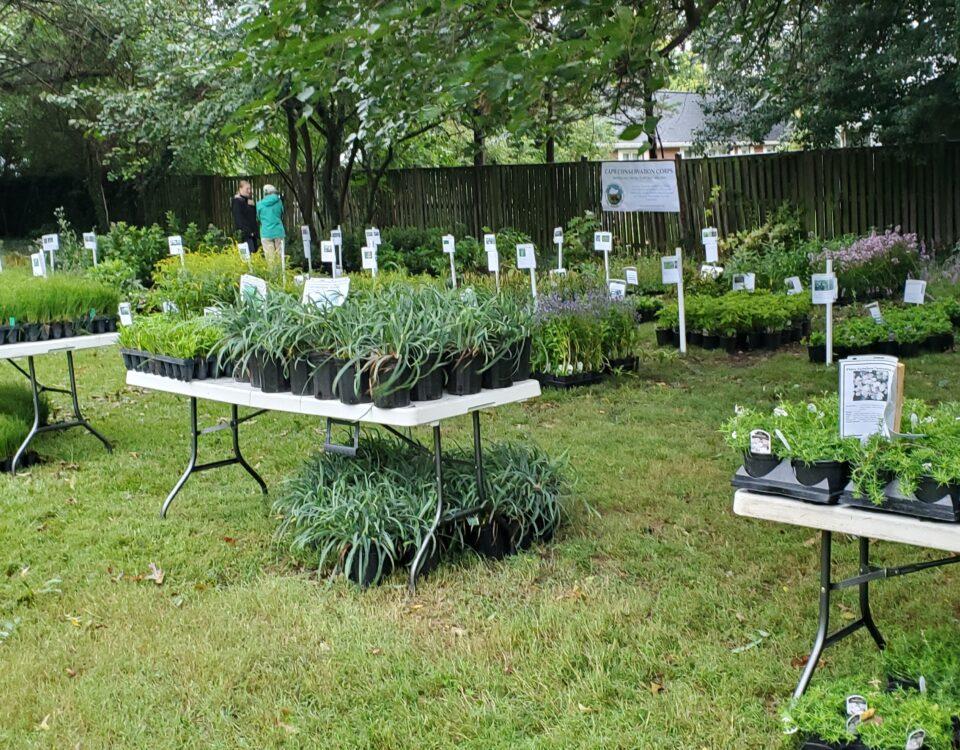Our Native Plant Sale & Fest: Fall is the Time to Plant
August 9, 2019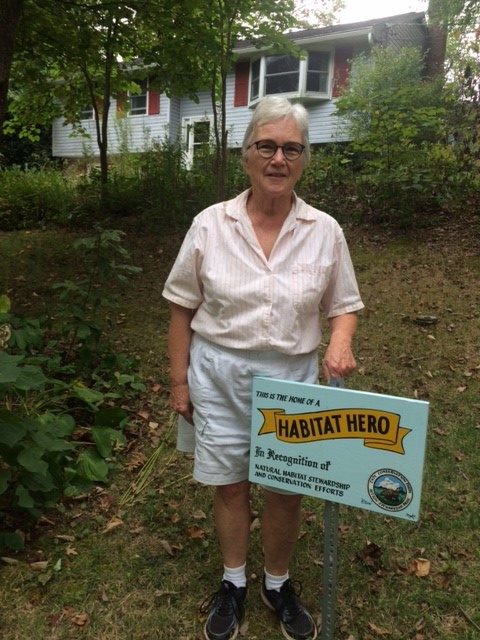
2019 – Habitat Hero – 9 – September
September 20, 2019By: Stacey Wildberger w/ Al Todd
There is a little known, sometimes forgotten Ravine that feeds into Lake Claire, across from the property address 1037 Lake Claire. According to resident Al Todd, most of the flow into the ravine is intermittent (i.e. flows mostly in response to rainfall and storm water runoff with some minimal base flow) The watershed reached up to St Margaret’s Road and Hampton Road, Glenwood Dale Drive to Summit Drive. When the sewer lines were first installed in the Cape, a main line was run down through this area and for a long time there was an access road to the pump house that ran from Lake Claire Drive down. The rusted poles and part of the old cable gate are still there. Soon after the sewer line, a storm drain inlet was installed at 1037 Lake Claire and the original stream channel that ran through this lot was placed in a concrete culvert to prevent flooding of the road. Gabion check dams were installed about the same time to prevent too much erosion from the storm water system. It is likely that the entire area was disturbed during this decade of sewer installation and storm water work. A group of residents formed Friends of Lake Claire and began working on cleaning up the many invasive plants and hauled tons of debris out of the ravine, pointing to the fact that it was likely a dumping ground and storage site for construction supplies. In 2013, with funds from a grant, they hired Eco-Goats as an environmentally and efficient way to remove the invasive plants that covered area. You can still see the vines hanging down to just above the tallest goats reach. Later, Friends of Lake Claire became Cape Conservation Corps in 2015 as we broadened our focus to other natural areas of Cape St Claire.
Interestingly, there is still a small intermittent wetland on the lower west side of the ravine that is likely fed by groundwater. It remains wet for several days to a week after rainy spells. Bald cypress and willow were planted down there; keeping the lower part of the trail very wet as it overflows during these periods. Long-time Broadneck Peninsula Mac Rideout resident shared the following story with Al many years ago, before his passing. “His family owned much land in the area (including Whitehall manor and other properties). He was a real history buff and wrote a history of the area some years ago. One of the stories he told me one time he was at my house was that when he was a boy (and there was no Cape St Claire, no Highway 50, no Bay Bridge, etc. They used to ride their horses all over this area because they were part of the Pony Club (red building at entrance to CSC) and used to race on the track that used to be at Revell Downs and the straight race track that turned into Hampton Road. He said they used to ride horses down to the beach near Lake Claire and they always stopped at a spring that was in the ravine just behind my house. That spring is gone of course, probably largely from the reduction of recharge from development.”
Over the past year Cape Conservation has stepped up our efforts to further clear invasive plants from the Ravine to make way for beneficial native plants. Some of the plants have been planted by us but many have sprung up on their own after being given a chance to thrive once the invasives were under control. Last spring we experimented with fighting plants with plants. We ordered 200 plugs of Packera Aurea golden ragwort and planted them in groups of 10-12 in various 5’ circles areas that invasive garlic mustard was known to grow. The idea is that the golden ragwort will spread and suppress the garlic mustard. Throughout the spring and summer we have met almost weekly to hand pull the garlic mustard before it produced seed to help stop the spread of even more. We have watched those small plants thrive, and spread in just this first season. As we are weeding we have been planning where to plant another 150 plugs at the end of September for even more coverage.
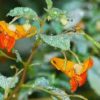
As I mentioned, the more we have removed the invasive plants from the area the more you can see other plants, particularly native plants volunteering in the space. I was very excited to see the following native plants come up in the Ravine as they offer valuable resources to our local fauna. Please do not judge these plants by their names (almost all end in WEED). A weed is simply a plant growing in a place you do not want it. While some of these natives tend to be a bit aggressive they all serve an important part of our ecosystem. The banks of the ravine are covered right now in Impatiens capensis jewelweed, a 3-5’ late spring to early fall orange blooming herbaceous plant. One of the best features of this “jewel” is it attracts hummingbirds, butterflies and bees It is commonly found growing in ditches and along creeks so the Serene Ravine is the perfect location for it to thrive.
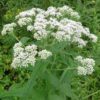
One of my favorite pollinator attracting plants that has sprung up in the Serene Ravine is Eupatorium serotinum late-flowering thoroughwort or boneset. A member of the aster family, it is fall blooming so it offers an important late season nectar source for pollinators and migrating butterflies. The tiny white flowers can be seen covered in the largest variety of bees, flies, and other small insects I have ever seen.
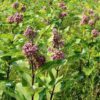
As we know, Asclepias sp. milkweed is the only host plant that Monarch butterflies can lay their eggs on. The Serene Ravine has become a nursery for the baby monarch caterpillars as Asclepias syriaca common milkweed has volunteered there. While I was there last week I found many caterpillars munching happily away on this plant that many consider a “weed”. These caterpillars will become the next generation of Monarchs that will soon begin their fall migration. Luckily, in addition to their host plant we also have several nectar sources at the ravine for them to fuel up on for their long journey.
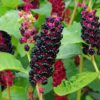
This next native “weed” I have a love/hate relationship with, Phytolacca Americana, pokeweed. I love it because the dark purple berries provide a wonderful source of food for migrating and over wintering birds, the hummingbirds enjoy the nectar of the white flower and it is a host plant for giant leopard moth. The berries even nourish our neighborhood foxes, opossums and raccoons. The hate because it can become so aggressive and quickly take over an area. In my own yard I let it be in some of the wilder areas but try to control (remove) it from the garden areas. In the right setting this “weed” can be a valuable addition to the ecosystem.
What I learned over the last several months of weeding at the Serene Ravine was to not judge the plants that are growing there too quickly. I have spent time getting to know what is there, identifying them and finding out what benefits or hazards they offer. I took time to look for caterpillars on the milkweed, watched the swallowtail butterflies sip nectar from a highly invasive vine we are trying to eradicate, I studied the delicate boneset supporting so many varieties of pollinators and I noticed the ripening berries of the pokeweed that will soon nourish a variety of birds, including cedar waxwings, mourning doves, eastern kingbird, great catbird, summer tanager and hooded warblers. I encourage you to stop by the Serene Ravine and walk the path, stop on the benches and observe the life that is being supported in this little slice of natural area. We need Wednesday Weed Warriors to control the invasive that continue to pop up and nurture the natives that spring up to support the local fauna. If you are interested in helping with the continued restoration efforts please let me know at [email protected].


